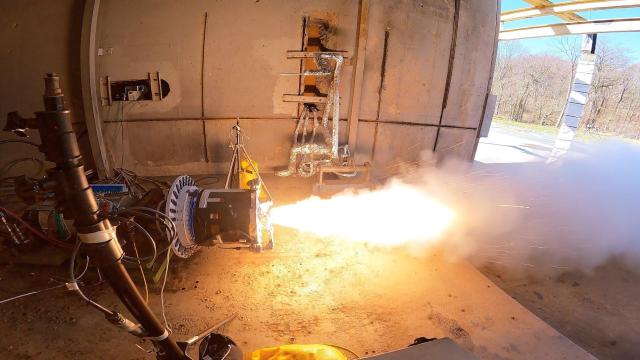NASA’s Perseverance rover has been diligently collecting rocky samples from Mars to stow them away on the planet’s dusty surface while engineers work to develop a rocket that can launch off of another world as a crucial step in the process of retrieving the samples.
The team behind the Mars Ascent Vehicle (MAV) recently tested its first and second stage solid rocket motors in a vacuum chamber that simulated the cold temperatures on the Red Planet, according to NASA.
“This test demonstrates our nation has the capacity to develop a launch vehicle that can successfully be lightweight enough to get to Mars and robust enough to put a set of samples into orbit to bring back to Earth,” Benjamin Davis, MAV propulsion manager at NASA’s Marshall Space Flight Center, said in a statement. “The hardware is telling us that our technology is ready to proceed with development.”
Mars Sample Return is one of the most complex missions to be carried out by NASA. It involves a fleet of spacecraft, including an orbiter, lander, two helicopters, and the first rocket to launch from the surface of another planet.
MAV is a two-stage rocket with two solid rocket motors – SRM1 and SRM2. SRM1 will propel MAV away from the surface of Mars, while SRM2 will spin the rocket’s second stage to place a container with the samples in orbit around Mars so that it can be picked up by the Earth Return Orbiter.
In order to test MAV, the team prepared development motors that will help them adjust their designs before they start building the real thing. The SRM2 development motor was tested on March 29 at the Northrop Grumman facility while SRM1 was tested on April 7 at Edwards Air Force Base in California.
SRM1 was placed in a vacuum chamber with temperatures of -4 degrees Fahrenheit (-20 degrees Celsius) to simulate conditions on Mars. For the rocket motor to survive the extreme cold, the team had to outfit it with a trapped ball nozzle with a supersonic split line as opposed to a regular gimballing solid rocket motor nozzle, which isn’t designed for the Martian climate. Nozzles are specially-shaped tubes through which hot gases flow, and they are used as part of rocket engines to produce thrust by accelerating hot exhaust.
During the test, the supersonic splitline nozzle achieved the sixth of nine technology readiness levels based on a scale developed by NASA. The new nozzle design will still undergo more testing to, “make sure it can handle the intense shaking and vibration of launch, the near vacuum of space, and the extreme heat and cold expected during MAV’s trip,” according to NASA.
The Mars samples are expected to arrive to Earth in the early 2030s, although the mission is under scrutiny after going over budget and facing possible delays. A Senate subcommittee recently threatened to cancel the mission altogether if NASA does not submit a year-by-year funding profile for Mars Sample Return within the $US5.3 billion lifecycle cost outlined in the 2022 planetary science Decadal Survey.
